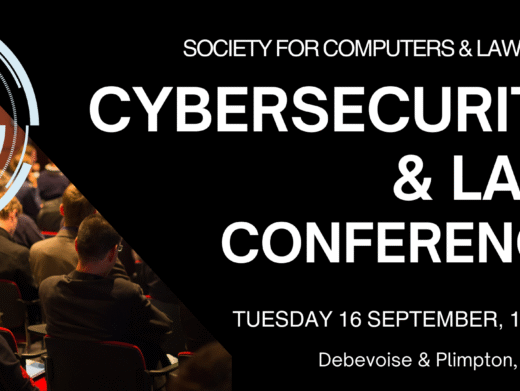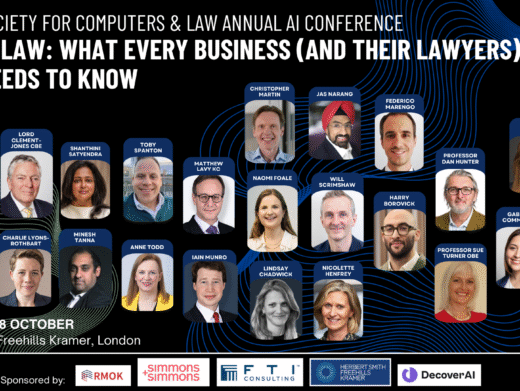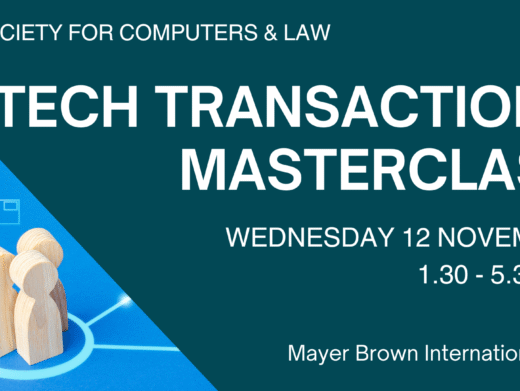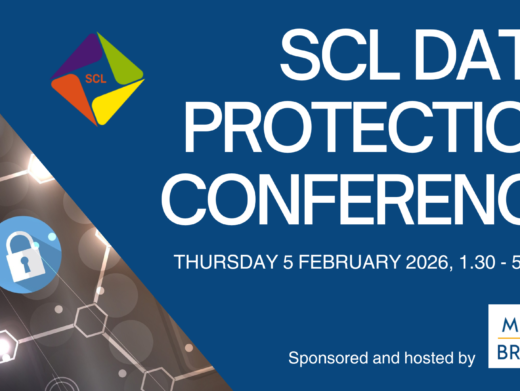In SAS Institute Inc. v World Programming Limited [2013] EWCA Civ 1482, the Court of Appeal handed down its decision in the lengthy litigation concerning the status of copyright in computer functionality. The Court of Appeal came to the same conclusion as Arnold J but, interestingly, Lewison LJ, giving the leading judgment, disagreed with Arnold J’s reasoning in a number of key areas. The Court of Appeal decision is significant in that it gives further clarification as to whether copyright can be claimed in relation to the functionality of a computer program, and is a useful reminder of the perils of sharing computer program functionality in literature associated with the program.
Before turning to the Court of Appeal decision, we set out a brief reminder of the background and the key issues considered by the various courts.
Background
SAS is the developer and owner of an integrated set of software programs written in its own programming language, which enable users to perform analysis and processing, particularly statistical analysis (the SAS System).
SAS sold a ‘Learning Edition’ software product, which enabled users to learn to use the SAS System. WPL, a competitor of SAS, developed a rival system by studying the Learning Edition and by consulting a SAS user manual (the WPL System).
Prior to WPL’s development of the WPL System, if a user wanted to switch to another supplier’s software system, they would need to replace all their existing SAS application programs as they were written in SAS computer language. The WPL System recreated, as closely as possible, the functionality of certain components of the SAS System, but in a different programming language (Java and subsequently C++). This enabled users of the SAS System to run their existing SAS application programs on the WPL system with little or no change in functionality. As a result, users could discontinue their licences for the SAS System without the onerous task of replacing all their programs.
SAS’s Claims
SAS brought a series of claims against WPL, alleging that it:
1. indirectly infringed copyright in the SAS System when creating the WPL System (the Program to Program Claim);
2. used the manual for the SAS System as a technical specification for creating the WPL System, and copied a substantial part of that manual, thereby infringing the copyright in the SAS manual (the Manual to Program Claim);
3. infringed the copyright in the SAS manual by reproducing a substantial part of it in WPL’s own manual and guide (the Manual to Manual Claim); and
4. used the SAS Learning Edition software outside the scope of the licence granted by SAS by using it to develop its own competing WPL system (the Learning Edition Claim).
The case was heard at first instance in the High Court by Arnold J, who provided his first judgment in July 2010 (see [2010] EWHC 1829 (Ch)), at the same time referring several questions to the CJEU on the basis that certain issues of European law were not acte clair. After Advocate General Bot gave a preliminary Opinion (see [2011] EUECJ C-406/10), the CJEU handed down its decision on 2 May 2012 (see Case 406/10 [2012] EUECJ C-406/10). The case was then referred back to the High Court, where Arnold J handed down a judgment (see [2012] EWHC 69(Ch)) consistent with his first instance judgment which he felt had been endorsed by the CJEU.
SAS appealed to the Court of Appeal, although not in relation to the Program to Program Claim since it was common ground that, following the ruling of the CJEU, neither the language nor the functionality of the SAS System was protected by copyright under the Software Directive.
Manual to Program Claim – alleged copying of the SAS manual to create the WPL System
High Court Decisions
In his High Court decisions, Arnold J recognised that previous English decisions (Navitaire v easyJet [2004] EWHC 1725 (Ch) and Nova Productions Ltd v Mazooma Games Ltd [2007] EWCA Civ 219) had held that it is not an infringement of copyright in the source code of a computer program for a developer to study how the system works and to then reproduce the functionality of the original program (provided the source code or object code has not been copied).
Arnold J agreed in principle with the approach of counsel for SAS, who submitted that WPL had reproduced the form of expression of the mathematical formulae set out in the SAS manual in the WPL source code. However he was not persuaded that the WPL System had reproduced a substantial part of the expression of the SAS manual.
Arnold J was also not persuaded that the SAS manual amounted to an intellectual creation by its authors: the statistical formulae in the SAS manual had grown by accretion without an overall design, so it could not be said to be the creation of a particular author or group of authors, and further the authors of the statistical formulae were the authors of the SAS System, not the SAS manual.
Court of Appeal Decision
Lewison LJ recognised that it is a cliché of copyright law that copyright does not protect ideas: it protects the expression of ideas. But he pointed to the fact that this dichotomy had made its way into international treaties and European legislation, for instance TRIPS, WIPO, the Software Directive, and the Information Society Directive (by virtue of the fact that the Information Society Directive is governed by the same principles as the Software Directive, following Case C-5/08 Infopaq International A/S v Danske Dagblades Forening). All these Directives point to the fact that it is the expression of an author’s intellectual creation that is protected. Further, following Case C-393/09 Bezpecnostini softwarova asociace – Svaz sofwarove ochrany v Ministerstvo kltury, if expression is dictated by technical function then the criterion of originality is not satisfied and the product is not an intellectual creation of the author at all.
Lewison LJ concluded that the compilations of formulae, keywords, default values, comments and optimisations contained within the SAS manual, which were in effect descriptions of the functionality of the SAS System, did not count as a form of expression of an intellectual creation (which is capable of copyright protection), but was rather an idea (which isn’t).
Lewison LJ also concluded it would also be contrary to the policy of the Software Directive and the Information Society Directive if SAS could secure copyright protection for the functionality of its program indirectly via its manual, which simply explains that functionality.
Manual to Manual Claim – alleged copying of the SAS manual to create the WPL manual
The High Court Decisions
Arnold J decided one aspect definitively in favour of SAS: WPL had copied a substantial part of the SAS manual when they created their own manual, and so had infringed copyright in the SAS manual; this was not the case, however, with respect to the SAS guides which did not infringe copyright.
The Court of Appeal Decision
According to Lewison LJ, insofar as it concerned the compilations of formulae, keywords, default values, comments and optimisations, the Manual to Manual Claim was inexorably interlinked with the Manual to Program Claim, and so they stood or fell together: there was no infringement of the copyright in the SAS manual by replicating those parts that described the functionality of the SAS System in the WPL manual. The ‘linguistic reproduction’ of the precise terms of the SAS Manual was a different matter, and in that respect there were instances of copyright infringement in the WPL Manual.
Learning Edition Claim – alleged breach of the Learning Edition Licence
The High Court Decisions
Following the CJEU decision, which provided that a person who uses a computer program in accordance with a licence is entitled, without the authorisation of the copyright owner, to observe, study or test the program functions to determine the underlying ideas and principles of that program, Arnold J found that WPL was in breach of the terms of the licence in two different ways. Firstly, it had used the Learning Edition for purposes that were not ‘non-production’ purposes; and secondly it had allowed use of the Learning Edition by users other than those who had ‘clicked through’ the licence and hence fell outside the definition of ‘Customer’. However, he concluded that WPL’s use of the Learning Edition was within Article 5(3) of the Software Directive which provides that:
“The person having a right to use a copy of a computer program shall be entitled, without the authorisation of the rightholder, to observe, study or test the functioning of the program in order to determine the ideas and principles which underlie any element of the program if he does so while performing any of the acts of loading, displaying, running, transmitting or storing the program which he is entitled to do.”
Further, to the extent that such use was contrary to the terms of the licence, such terms were void under Article 9(1) of the Software Directive.
The Court of Appeal Decision
Lewison LJ noted that both the CJEU and Arnold J had concluded that the fact that WPL used the Learning Edition for a purpose outside the terms of the licence did not mean that it could not rely on Article 5(3) of the Software Directive. He added that, once you are entitled to perform acts (being loading, displaying, running, transmitting or storing the program) for any purpose specified in the licence, you are also entitled to perform those acts for a purpose that falls within Article 5(3) (i.e. to observe, study or test the functioning of the program in order to determine the ideas and principles which underlie any element of the program).
The clause in the licence which prohibited ‘non-production purposes’ was therefore invalid under Article 9(1) if ‘non-production purposes’ includes those purposes specified in Article 5(3). Both Arnold J and Lewison LJ agreed that the clause was invalid.
A question also arose over who the ‘Customer’ actually was. Lewison LJ agreed with Arnold J that WPL had not breached the licence by authorising multiple employees to use the program, even though not all those employees had clicked through the licence agreement and agreed to its terms. Despite the fact that the rubric to be agreed to on entering into the licence read ‘By clicking on the “Yes” button, the individual licensing the Software (‘Customer’) agrees to these terms’, it was possible for the ‘Customer’ to be a company and, being a licensed company, WPL was entitled to use the Learning Edition without restriction on the number of employees whom WPL could authorise to observe, study and test the program, provided they did so one at a time and at a single workstation.
Comment
Although the Court of Appeal’s decision does not materially change the outcome, it is important because it re-evaluates and clarifies the effect of the CJEU’s earlier decision, and makes it very clear that copyright does not protect software functionality.
Lewison LJ’s leading judgment was in substance different to Arnold J’s, in particular by preferring to focus on the expression of the intellectual creation, rather than who did what. Lewison LJ stressed that the functionality of a computer program could not count as a form of expression of an intellectual creation. Borrowing the metaphor used by Pumfrey J in Navitaire, it is not a chef’s cake (or the functionality of a computer program) that is the expression of an intellectual creation, but rather the recipe itself (or source code).
Although it has been a long time coming since the dispute commenced some four years ago, the clarification is to be welcomed as bringing certainty to the area of protecting computer programs with copyright.
Those looking to develop and protect proprietary systems will need to look to other barriers to entry, both commercial and legal. Literal copying of object or source code (other than within the narrow exceptions) remains an infringement; manuals and related materials may be protected by copyright; whilst brand, additional developments and ‘value added’ services may help promote or maintain customer loyalty. Asserting copyright over the outcomes of a program will not be available as a deterrent to competitors. The appeal judgment is also a reminder of the risks of providing a description of a computer program’s functionality to the public or licensees in a form which could be used as an aid to replicate the functionality of that program using the replicator’s own source code.
For the customer, the result should be a positive one. They should be offered more choice as a by-product of the freedom of suppliers to compete with one another by creating programs with the same or similar functionalities. Developers will have the freedom to replicate certain functionalities without fear of reprisal under copyright law (provided that they do so within the bounds of permitted methods of observing, studying and testing the functionality of the original program).
David Cran is a Partner in the IP, Technology & Outsourcing Group at RPC.
Adam Cusworth is an Associate in the IP, Technology & Outsourcing Group at RPC.




